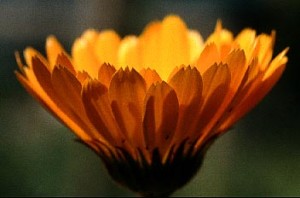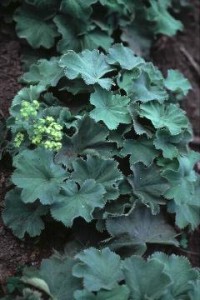What’s in a name? Mary’s herbs as domestic medicine
I don’t think that the names of plants are completely random. While I have no evidence for this, I think they mean something. And I am always interested to discover what that ‘something’ is.
Let’s take for example that group of medicinal plants whose names have Christian associations. Specifically a subgroup of that group – the plants whose names are associated with Mary, the mother of Jesus.
First, some background. In medieval Europe, when many of these plants were named and documented, the Church was not only a powerful cultural institution but also a major source of healthcare. Monasteries and nunneries often had specialist herb gardens, and specialist herbalists. Networks of holy orders enabled plants to be exchanged and their actions to be documented via beautiful manuscripts. Some of these plants were rare, or traded over long distances, others were common, local plants.
Within the Church, Mary had enormous cultural significance as a figure that is both powerful (from her status as Jesus’ mother) and accessible, particularly to women. I argue that the plants that carry her name are similar – powerful healers, but very often accessible. Herbs bearing her name are not usually exotic or expensive herbs. They are more often ones that are easy to grow, plants of the everyday, that are used for common domestic problems.
In addition, most (not all) can be used freely at home, not only because they grow so easily, but because they are gentle in action and can be used for extended periods by most people.
Plants with an association with Mary include
- Marigold (Mary’s gold) Calendula officinalis
- Rosemary, Rosemarinus officinalis the plant whose flowers turned blue, according to legend, when Mary hung her coat on a rosemary bush during the Holy Family’s flight to Egypt.
- Milk thistle – Silybum marianum. The variegated leaves were said to be stained with Mary’s milk . this is a plant that increases the flow of milk in nursing mothers, so the staining of the leaves can be seen as another example of Doctrine of Signatures. ,
- Lady’s mantle – Alchemilla vulgaris
- Our lady’s taper – Verbascum thapsis
A couple of exceptions to this ‘very safe’ rule are the following, both of which are powerful hear medicines, not to be used at home or by the untrained. In Australia, their use is severely restricted.
- Our lady’s tears Convallaria majalis
- Foxglove (Our lady’s gloves) Digitalis purpurea
A link to all things associated with Mary and gardens can be found at the University of Dayton, a Catholic university in Ohio.
http://campus.udayton.edu/mary/resources/m_garden/marygardensmain.html

Marigold – Mary’s gold.
Calendula officinalis
Photo Jenny Grinlington
What’s its name?: Calendula officinalis – Marigold
What part of the plant is used?: flowerheads
What does it do? mostly used externally as a wound healer
What is it good for? wound healing
Where does it come from?: Eujrope
Are there issues re over-harvesting? No, it can be cultivated

Alchemilla vulgaris, Our Lady’s Mantle
photo by Jenny Grinlington
What’s its name?: Alchemilla vulgaris, Lady’s mantle
What part of the plant is used?: herb
What does it do? it’s an astringent
What is it good for? it’s particuarly used for excessive menstrual bleeding, sometimes for menstrual pain
Where does it come from?: Europe
Are there issues re over-harvesting? no, grows in many areas, can be cultivated

0 Comments